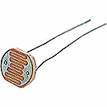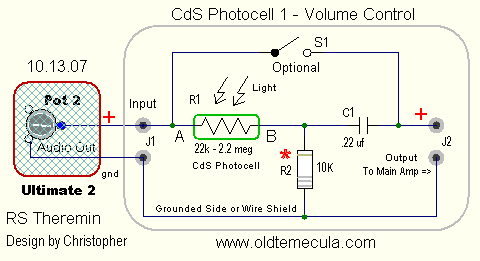See my replies in the other thread you opened. There is a recommended circuit board layout which should be respected, breadboards have often too much parasitic capacitance. Second, there are recommended antenna dimensions and mounting instructions with the same intent: to minimize static and parasitic capacitance and to maximize the capacitive effect of the hand onto the antenna. Third, after setting everything up correctly, the circuit has to be meticulously tuned with the help of the variable capacitor and by varying the length of the telescopic antenna by a few 1/10 of mm. The tuning instructions are in the very first post of this thread:
"As a pitch antenna, a telescopic antenna with a diameter of 6mm (1/4") and a length of 50cm (20") works best. After building the circuit and installing it together with the pitch antenna in whatever non-metallic housing, pull the segments of the telescopic antenna fully out, but not the last (thinnest) one, which should be pulled out only at the half of its length. Now adjust the variable capacitor for a decent pitch field with the zero point at about 50cm (20") from the antenna. That was the coarse pitch tuning. Fine tuning can now be done by pulling out or pushing in the last antenna segment by a few millimeters until you get a pleasant field geometry and tone spacing."
If the circuit can not be tuned this way, that means that there is something wrong, either with the capacitive behavior and environment of the antenna, or with the circuit, i.e. using coils with too high parasitic capacitance or a bad circuit layout. That's why I posted a layout which works for sure.




